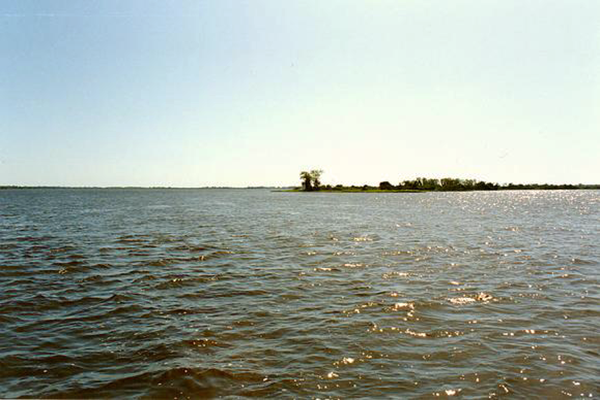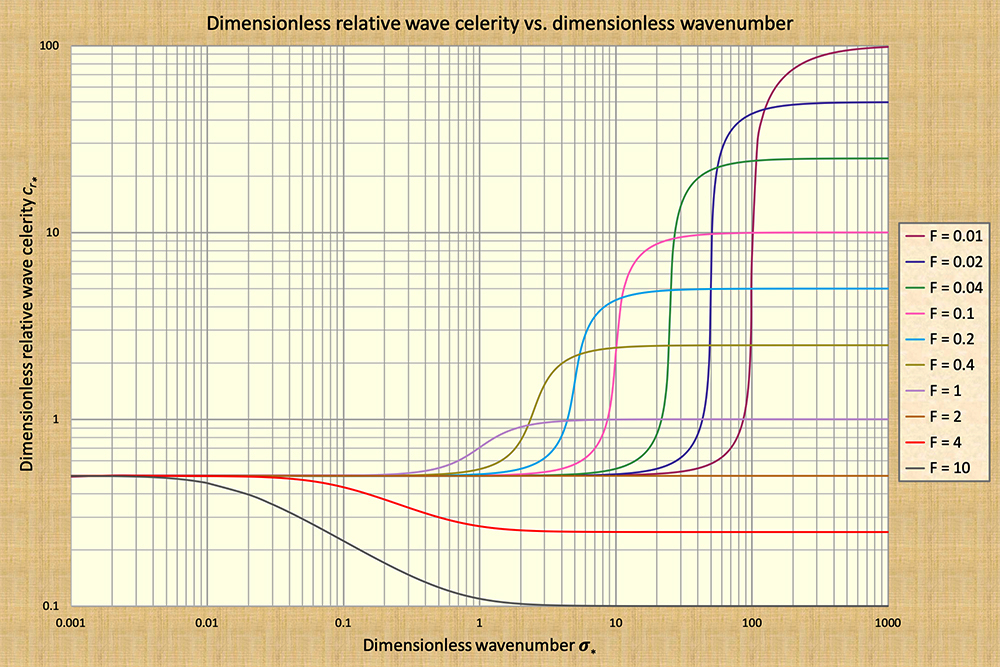THE PONCE-SIMONS NUMBER
Professor Emeritus of Civil and Environmental Engineering
San Diego State University, San Diego,
California
1. INTRODUCTION
In hydraulic engineering, viscosity, or its synonym, diffusivity, is a fundamental fluid property.
Diffusivity
is the first moment of the flow velocity.
Therefore, the units of diffusivity are (L/T)L, or its equivalent expression L2/T.
The fluid properties listed in Table 1 describe the flow up to second order. In this article, we focus on the Ponce-Simons number, a ratio of diffusivities which characterizes the spatial scale of the wave phenomena. Increased understanding of this dimensionless number significantly enhances the comprehension of wave phenomena in unsteady open-channel flow.
2. DIFFUSIVITIES IN OPEN-CHANNEL FLOW
Three diffusivities are recognized in open-channel flow:
Molecular diffusivity,
Hydraulic diffusivity, and
Spectral diffusivity.
In fluid mechanics,
the molecular diffusivity νm
is commonly referred to as kinematic viscosity ν,
a measure of the fluid's
internal resistance to flow at the molecular level.
3. THE PONCE-SIMONS NUMBER
The three diffusivities identified in Box A give rise to only two independent dimensionless numbers
(Ponce, 2023b):
The ratio of hydraulic to molecular
diffusivity, clearly a type of Reynolds number; and The ratio of hydraulic to spectral diffusivity,
a type of Ponce-Simons number.
In their seminal work on shallow wave propagation, Ponce and Simons (1977) defined a dimensionless wavenumber
as follows:
σ* = (2π /L)Lo.
It is observed that the Ponce-Simons number is indeed a surrogate for a ratio of diffusivities, since:
σ* = (2π /L)Lo = 2π (νh /νs).
Kinematic (extreme left),
Diffusion (left-of-center),
Mixed kinematic-dynamic (right-of-center), and
Dynamic (extreme right).
Kinematic flow:
σ* < 0.001.
Diffusion flow:
0.001 ≤ σ* < 0.17.
Mixed kinematic-dynamic flow:
0.17 ≤ σ* < 1 to 100,
depending on the Froude
number Dynamic flow:
σ* ≥ 10 to 1000, depending on the
Froude number (refer to Fig. 1).
The findings of Ponce and Simons (1977), depicted in Fig. 1, elucidate
the behavior of all wave types
in unsteady open-channel flow. These include
both "long" waves, of a kinematic nature, towards the far left
side of Fig. 1, and "short" waves, of a dynamic nature, towards
the far right, both of which ostensibly feature constant
celerity.
4. SUMMARY
The three diffusivities relevant in fluid mechanics and open-channel flow [(1) molecular, (2) hydraulic, and
(3) spectral)], are
appropriately defined and explained. This article focuses on the Ponce-Simons number, properly the ratio of
hydraulic and spectral diffusivities, while being affected with the factor 2π.
REFERENCES
Chow, V. T. 1959. Open-channel hydraulics. McGraw-Hill, Inc, New York, NY.
Hayami, I. 1951.
On the propagation of flood waves. Bulletin, Disaster Prevention Research Institute,
No. 1, December, Extract.
Ponce, V. M. and D. B. Simons. 1977.
Shallow wave propagation in open channel flow.
Journal of Hydraulic Engineering ASCE, 103(12), 1461-1476.
Ponce, V. M. 1979.
On the classification of open channel flow regimes. Proceedings,
Fourth National Hydrotechnical Conference, Vancouver, British Columbia, Canada.
Ponce, V. M. 2023a.
When is the diffusion wave applicable?
Online article.
Ponce, V. M. 2023b.
Ths states of flow
Online article.
| ||||||||||||||||||||||||||||
| 240129 |

